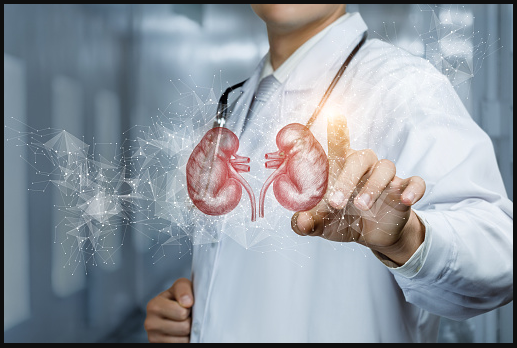By Diana Rodriguez
Bladder pain can signal anything from a minor infection to a serious health condition like cancer. Symptoms may range from discomfort in the lower abdomen area to burning with urination.
The good news is that bladder cancer is rare, and bladder pain is usually not serious. But that doesn’t mean you should ignore it when you have pain or pressure in your pelvis or lower abdomen that may be coming from your bladder.
How do you know whether the pain is worrisome or indicates a benign condition? Pay attention to the other symptoms you have — particularly if you have blood in your urine along with bladder pain, says Nazema Y. Siddiqui, MD, an associate professor of obstetrics and gynecology at the Duke University School of Medicine in Durham, North Carolina.
Bladder pain could be due to the conditions listed below. But pain in the bladder area can be caused by pelvic pain due to gynecologic conditions. Certain gastrointestinal issues can also lead to pain in or around the bladder. “When women have bladder pain, they should seek evaluation,” Dr. Siddiqui says.
Anxiety and Disease Experts Weigh In On How Not to Freak Out About Every Sign of an Illness in 2022
1. Urinary Tract Infections (UTIs): More Common in Women
Urinary tract infections, sometimes called bladder infections, strike women more often than men, and simple anatomy is the cause.
The female urethra is closer to areas that have natural bacteria, such as the anus and vagina. It’s also shorter than a man’s urethra, according to the National Institute of Diabetes and Digestive and Kidney Diseases (NIDDK).
Bladder pain from UTIs can happen at any age. In young women, it is a common symptom of urinary tract infections, along with frequent and painful urination. Symptoms in older women can vary but typically include muscle aches, abdominal pain, fatigue, and weakness.
It’s important to see your doctor because treatment with antibiotics like Macrobid (nitrofurantoin) or Bactrim (trimethoprim-sulfamethoxazole) can usually clear up a urinary tract infection, the NIDDK notes.
And though the infection may go away without treatment, antibiotics can speed healing and quickly eliminate uncomfortable symptoms. Drinking extra fluids and urinating frequently will also help treat the infection and your discomfort.
2. Interstitial Cystitis: A Severe Form of Bladder Pain Syndrome
More than three million American women live with pelvic pain related to interstitial cystitis, a condition in which the bladder wall becomes irritated and inflamed, according to the NIDDK. “Interstitial cystitis is a severe form of bladder pain syndrome,” Siddiqui says.
Bladder discomfort from interstitial cystitis may range from tenderness to severe pain, according to the institute. Another clue that interstitial cystitis is the culprit: Menstruation tends to worsen bladder pain.
Interstitial cystitis is not caused by a urinary tract infection, although the symptoms may worsen if you have interstitial cystitis and get a UTI. While the cause is not understood, according to the NIDDK, certain events or factors seem to trigger flares in symptoms. These include stress, changes in diet, allergies, and taking certain drugs, among other things.
Treatment options for interstitial cystitis include distending (stretching) the bladder, taking oral medication, physical therapy, and using electrical nerve stimulation to alleviate pain, but there is no known cure. In severe cases, where other treatments haven’t worked, sometimes surgery is an option.
3. Changes in Your Reproductive System
Bladder pain in women may also be a result of thinning vaginal skin, says Karl Luber, MD, a urogynecologist and a founder of the female pelvic medicine and reconstructive surgery fellowship program at UCSD–Kaiser Permanente in San Diego.
“This is called atrophy and it’s most common when menopause deprives the tissues surrounding the vagina of estrogen,” he explains. Oral estrogen doesn’t help, but a vaginal estrogen cream may ease symptoms.
Talking with your doctor about bladder pain and discomfort can help determine where the problem really lies, Dr. Luber says.
4. Bladder Cancer: Less Common in Women
Bladder cancer is rare, especially in women. Of the roughly 83,730 new diagnoses each year in the United States, about 19,450 are in women, according to the American Cancer Society (ACS). The most common symptom is blood in the urine; some women also experience a painful, burning sensation when urinating.
Bladder cancer treatments include surgery, chemotherapy, and radiation therapy. According to the ACS, most people need surgery to remove a tumor or tumors. All or parts of the bladder are removed in severe cases.
Get a Diagnosis, Not a Self-Diagnosis
It’s also important to consider whether the uterus and other organs of the gynecological system could be causing bladder pain, Siddiqui says, as they are close to the bladder. Pelvic floor dysfunction, such as tightness or spasms of the pelvic muscles, commonly occurs with bladder pain and may make bladder pain worse, she explains. Pelvic pain can also be caused by endometriosis, pelvic inflammatory disease, or ovarian cysts. Additionally, gastrointestinal problems such as inflammatory bowel diseases (Crohn’s disease or ulcerative colitis) can sometimes be the source of pelvic pain, notes Mayo Clinic.
“If none of these conditions are present and women have ongoing bladder pain, they are typically treated for ‘bladder pain syndrome,’ which refers to painful conditions of the bladder where other causes such as UTI and cancer have been excluded,” says Siddiqui.
The bottom line for women to keep in mind: Don’t self-diagnose your bladder pain. Addressing and treating the issue can offer relief for body and mind.

